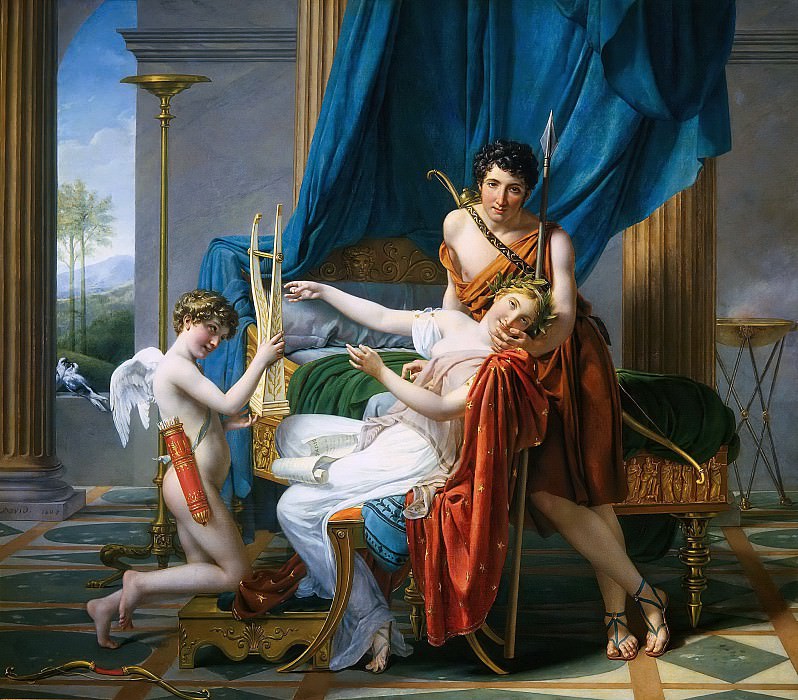Sappho and Phaon Jacques-Louis David (1748-1825)
Jacques-Louis David – Sappho and Phaon
Edit attribution
Download full size: 2806×2463 px (1,2 Mb)
Painter: Jacques-Louis David
Location: Hermitage, St. Petersburg (Эрмитаж).
The work by the talented French artist Jacques Louis David is in oil on a rather large canvas. David is considered the founder of Neoclassicism, drawing on the writings of his ancient heritage. The work Sappho and Faon takes on the characteristics of the artist’s later work. It depicts the lovers Sappho and Faon, as well as a small Cupid handing the woman a lyre. In the image of the musical instrument and the little angel, the artist demonstrates love as the basis of creative inspiration.
Description of Jacques Louis David’s painting Sappho and Faon
The work by the talented French artist Jacques Louis David is in oil on a rather large canvas. David is considered the founder of Neoclassicism, drawing on the writings of his ancient heritage.
The work Sappho and Faon takes on the characteristics of the artist’s later work. It depicts the lovers Sappho and Faon, as well as a small Cupid handing the woman a lyre.
In the image of the musical instrument and the little angel, the artist demonstrates love as the basis of creative inspiration. Based on ancient Greek histories, Sappho was a very famous poetess who created in the genre of melodic lyricism. She was born in the lesbian city of Eres around the end of the 7th century.
In her works there was no mention of Phaon, a fisherman endowed by the goddess with infinite youth and captivating beauty. The legend, which states that Sophea threw herself from a rock into the sea because of her unrequited love for a young boy, Faon, appeared after the poetess’ life.
As a subject for his work the artist chooses the moment where Sappho sings an ode about her love for the beautiful Faon, and the lover of the poetess, who appeared at the same moment, touches her face with his hand tenderly. The poetess stops playing her lyre and hands it over to Cupid. At this moment, she is replaced by the pleasure of her lover’s love and closeness.
It is not known whether Sappho’s love for the young boatman was real or fictional. There is no historical confirmation of this event, but it inspired the artist to create this beautiful painting.
It merges the detailing of elements of ancient clothing and imagery with classical and traditional symbols of love, relationships and tender feelings. The author emphasizes the sympathy between the two trees in love and the pair of white birds on the window.
Кому понравилось
Пожалуйста, подождите
На эту операцию может потребоваться несколько секунд.
Информация появится в новом окне,
если открытие новых окон не запрещено в настройках вашего браузера.
You need to login
Для работы с коллекциями – пожалуйста, войдите в аккаунт (open in new window).




















You cannot comment Why?